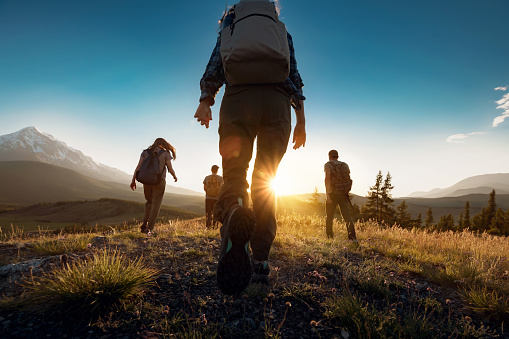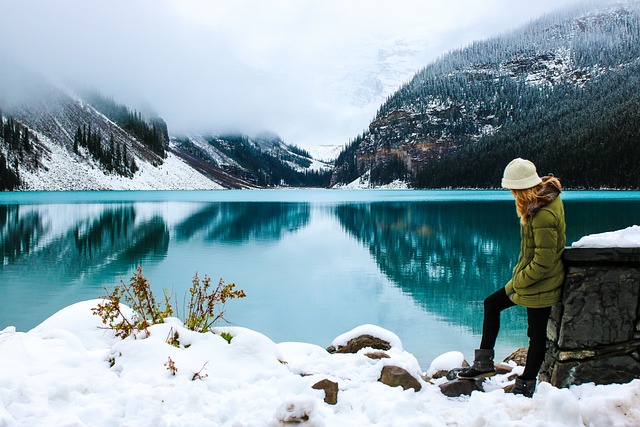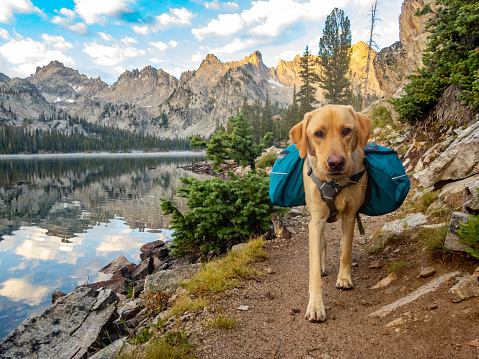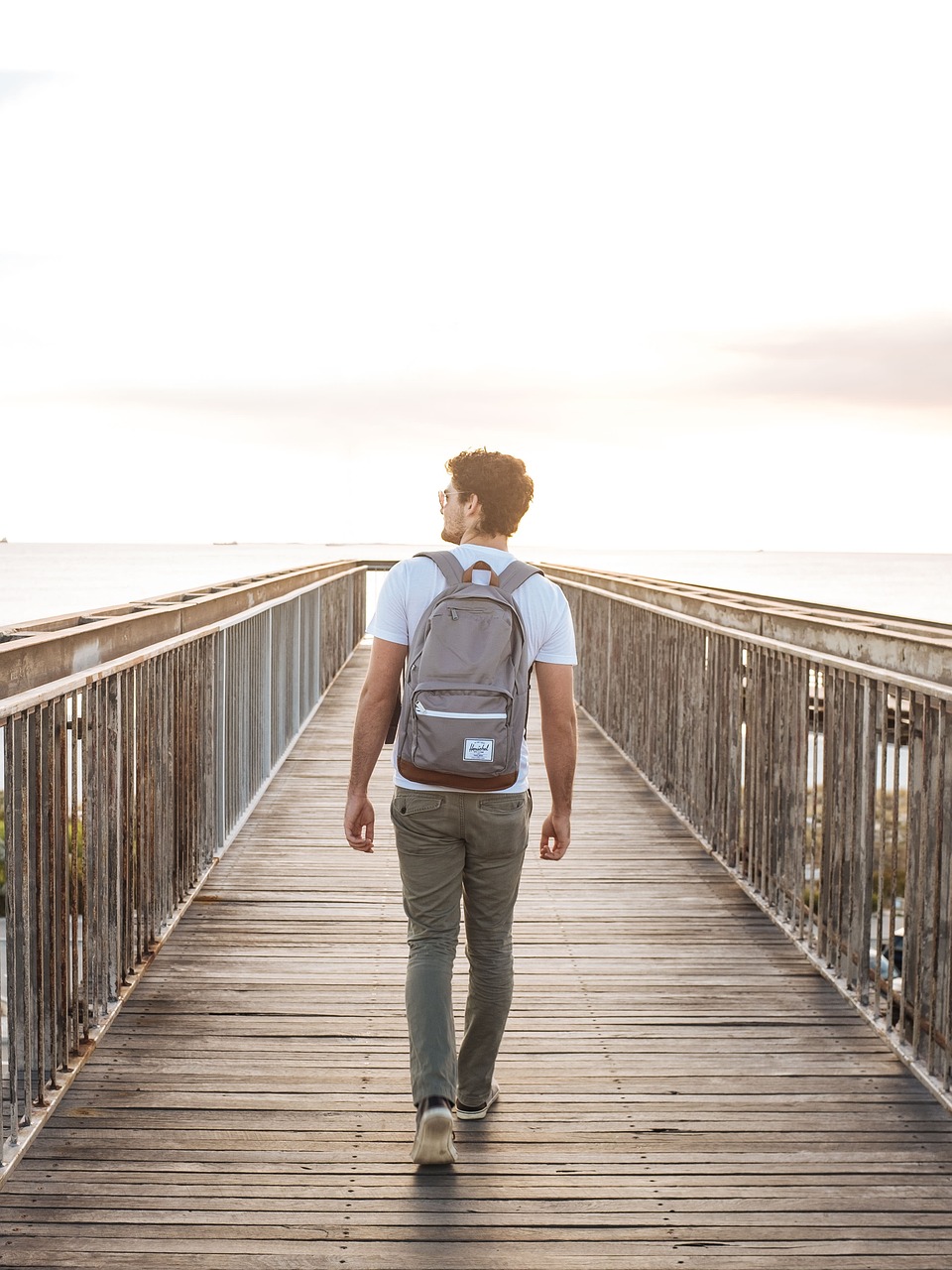Adventure Travel for Beginners: A Comprehensive Guide to Hiking, Biking, and More

In a world where the mundane routine can often dampen our spirits, adventure travel offers a tantalizing escape into the wonders of the great outdoors. For beginners, it presents an opportunity to embrace new challenges, test physical limits, and revel in the awe-inspiring beauty of nature. The allure of adventure travel lies not only in adrenaline-pumping activities but also in the transformative experiences and unforgettable memories it brings.

In this comprehensive guide, we will delve into the world of adventure travel, focusing on hiking, biking, climbing, and water sports. Whether you are an adrenaline junkie seeking thrill or a nature enthusiast longing to connect with the earth, adventure travel has something to offer to everyone. So, tighten your shoelaces, buckle your helmets, and get ready for an adventure of a lifetime!
Preparing for Your Adventure
A. Setting Realistic Expectations
As a beginner in adventure travel, it’s crucial to set realistic expectations. While these experiences can be awe-inspiring and rewarding, they also require preparation and respect for the challenges they bring. Understand that adventure travel might push your boundaries, both physically and mentally, but that’s precisely the allure of it. Be open to new experiences and challenges, but also acknowledge your limits and plan accordingly.
B. Choosing the Right Adventure for You
Adventure comes in various forms, each with its unique set of thrills and demands. Before embarking on your journey, take some time to assess your interests, physical capabilities, and preferences. Are you drawn to the tranquility of hiking, the adrenaline rush of biking, the heights of climbing, or the wonders of water sports? Understanding what excites you the most will help you choose the adventure that aligns best with your personality and desires.
C. Assessing Your Fitness Level
Different adventures demand varying levels of fitness. Whether you’re planning a challenging hike, a long-distance bike ride, a rock climbing ascent, or a kayaking expedition, your physical condition will play a significant role in your overall experience. Evaluate your current fitness level honestly and work on improving it gradually through regular exercise and training. Building strength and endurance will not only enhance your adventure but also ensure a safer journey.
D. Gear and Equipment Essentials
Appropriate gear and equipment are vital for a safe and enjoyable adventure. Depending on the type of adventure you choose, ensure you have the necessary gear and clothing. For hiking, invest in sturdy hiking boots, moisture-wicking clothing, a backpack, and trekking poles. Biking enthusiasts should have a well-fitted helmet, gloves, comfortable clothing, and a bike that suits their chosen terrain. Climbers require harnesses, ropes, carabiners, and climbing shoes, while water adventurers should have life jackets, waterproof bags, and appropriate swimwear. Always do thorough research on the necessary gear and invest in high-quality products for your safety and comfort.
Hiking Adventures
A. Selecting Suitable Hiking Trails for Beginners
Hiking is an excellent way to connect with nature, find inner peace, and witness breathtaking landscapes. For beginners, it’s crucial to start with trails that are well-suited for their fitness level and experience. Research local hiking spots and choose trails that offer moderate challenges and stunning scenery. Look for trails with clear markings, well-maintained paths, and amenities such as restrooms and water sources.

B. Essential Hiking Tips for Beginners
Hiking, though rewarding, requires careful planning and consideration of potential risks. Before you set off, acquaint yourself with essential hiking tips. Stay hydrated by carrying enough water, pack essential items like sunscreen, insect repellent, a first-aid kit, and a trail map. It’s advisable to hike with a group or a hiking partner, especially if you’re a beginner, as it enhances safety and makes the experience more enjoyable. Additionally, learn basic navigation skills and practice the principles of “Leave No Trace,” which advocates for responsible outdoor practices to minimize human impact on nature.
C. Staying Safe on the Trails
While hiking is generally safe, being aware of potential hazards and preparing for them is crucial. Educate yourself about the local flora and fauna, including potential wildlife encounters. Keep an eye on weather forecasts before your hike, as weather conditions can change rapidly. Always wear appropriate clothing and footwear to prevent injuries and dress in layers to adapt to temperature fluctuations. If you’re hiking in unfamiliar terrain, consider hiring a local guide or joining a guided hiking tour for added safety and local insights.
D. How to Pack for a Day Hike
Packing wisely is essential for a successful day hike. Carrying the right essentials while keeping your backpack light will ensure you’re well-prepared without feeling weighed down. Besides the basics like water, snacks, a trail map, a multi-tool, and a first-aid kit, consider carrying extra clothing layers, especially if the weather is unpredictable. Ensure your backpack is comfortable, well-fitted, and has padded shoulder straps to prevent strain on your shoulders and back during the hike.
E. What to Eat and Drink While Hiking
Hiking requires sustained energy and proper hydration, especially on longer treks or in challenging terrains. Pack high-energy snacks like nuts, granola bars, and dried fruits to keep your energy levels up. Consume small, frequent meals to maintain stable blood sugar levels throughout the day. It’s crucial to drink water regularly to prevent dehydration, so invest in a reliable water bottle or hydration pack to keep yourself well-hydrated during the hike. Remember to practice environmental stewardship by properly disposing of any waste and respecting nature’s balance.
Biking Adventures
A. Choosing the Right Bike for Your Adventure
Biking adventures encompass a wide range of terrains, from smooth city streets to rugged mountain trails. Choosing the right bike is essential to ensure your comfort and safety throughout the journey. Road bikes are designed for paved roads and offer speed and efficiency, while mountain bikes are built for rougher terrains and provide better stability and control. Hybrid bikes are a versatile option that combines features of road and mountain bikes, making them suitable for various terrains.
B. Preparing Your Bike for the Journey
Before embarking on your biking adventure, perform a thorough inspection of your bike to ensure it’s in good working condition. Check the brakes, tires, gears, and chain, and address any maintenance or repairs needed. Properly inflate the tires, and consider carrying a repair kit with essential tools, spare tubes, and a pump in case of on-trail fixes.
C. Safety Measures for Beginner Bikers
Safety should be a top priority for all bikers, especially beginners. Always wear a properly fitted helmet to protect your head in case of accidents. Familiarize yourself with hand signals, road rules, and proper biking etiquette to ensure a smooth and safe journey. Stay visible to drivers and pedestrians by wearing bright and reflective clothing, especially during low-light conditions.
D. Top Beginner-Friendly Biking Trails
Discovering beginner-friendly biking trails can be an exciting part of your biking adventure. Seek out well-maintained paths with lower difficulty levels and picturesque surroundings. Local bike clubs or online biking forums can be excellent resources for finding trails suitable for beginners. Choose routes that align with your fitness level and biking skills, and gradually progress to more challenging trails as you gain experience.
E. Fueling Your Body for a Biking Adventure
Biking demands physical endurance, so it’s essential to fuel your body adequately before and during your ride. Consume a balanced meal before setting off, including carbohydrates for energy, protein for muscle repair, and healthy fats for sustained fuel. During the ride, maintain your energy levels with snacks like energy bars, fruits, and trail mix. Carry a sufficient supply of water to prevent dehydration, and consider adding electrolyte-rich beverages for longer rides.
Climbing Adventures
A. Understanding the Different Types of Climbing
Climbing offers an extraordinary sense of accomplishment and a chance to conquer heights that were once thought unreachable. As a beginner, understanding the different types of climbing is essential to find your ideal climbing adventure. Bouldering involves climbing short, challenging routes without ropes, whereas sport climbing entails ascending routes with pre-placed bolts for protection. Traditional climbing, on the other hand, involves placing gear into the rock as you climb, making it more mentally demanding.
B. Indoor Climbing for Beginners
Indoor climbing gyms offer a safe and controlled environment for beginners to learn and practice climbing techniques. Sign up for a beginner’s class or workshop to gain insights from experienced climbers and instructors. Indoor climbing not only improves your physical strength and skills but also provides an opportunity to socialize with fellow climbers and foster a sense of community within the climbing world.
C. Essential Climbing Techniques to Master
Climbing is a skill-driven sport that relies on proper techniques to overcome challenges. Mastering essential climbing techniques, such as footwork, handholds, and body positioning, will significantly improve your climbing abilities and boost your confidence on the wall. Focus on balance, precision, and efficiency to tackle routes more effectively.
D. Climbing Safety Guidelines
Safety is paramount in climbing, and adhering to proper safety guidelines is critical to a successful and injury-free climb. Always perform a thorough check of your climbing gear, including harnesses, ropes, carabiners, and climbing shoes, before you begin. Communicate clearly with your belayer, the person who manages the rope for you, and use standard climbing signals to ensure seamless communication. Practice falling safely and learning how to arrest a fall if necessary, reducing the risk of injury.
E. Planning Your First Outdoor Climbing Experience
Once you have gained confidence in indoor climbing, consider venturing outdoors under the guidance of experienced climbers or professional guides. Climbing outdoors presents unique challenges, such as varying rock conditions, weather elements, and unfamiliar routes. Joining a guided outdoor climbing trip will not only enhance your safety but also introduce you to incredible climbing destinations that you might not have discovered otherwise.
Cultural Immersion in Adventure Travel
A. Respect for Local Cultures and Customs
Adventure travel often takes you to remote and culturally diverse locations. As you explore these regions, it’s essential to respect local customs, traditions, and beliefs. Engaging with the local culture can be a transformative experience, offering insights into different ways of life and fostering a deep appreciation for diversity.
B. Engaging with Local Communities
Embrace the opportunity to learn from the locals and support their livelihoods. Engaging with local communities in a respectful manner can lead to meaningful connections and enrich your adventure travel experience. Purchase locally made products and services to contribute to the local economy and help preserve traditional craftsmanship.
C. Sustainable Adventure Travel Practices
As adventure travelers, we have a responsibility to minimize our impact on the environment and the communities we visit. Choose eco-friendly tour operators that prioritize sustainability and conservation efforts. Follow Leave No Trace principles to ensure that you leave nature as you found it, without leaving behind any traces of your visit.
Overcoming Challenges and Fears
A. Building Mental Resilience
Adventure travel often pushes us beyond our comfort zones, both physically and mentally. Building mental resilience is essential for facing challenges with a positive mindset. Embrace uncertainty as an opportunity for growth and personal development.
B. Conquering Fear of Heights and the Unknown
Many adventure activities involve heights or unfamiliar environments, which can trigger fear and anxiety. Gradual exposure and seeking support from experienced adventurers can help you conquer these fears and embrace new experiences.
C. Dealing with Physical Demands
Adventure travel can be physically demanding, and it’s natural to face fatigue and soreness during your journey. Listen to your body, take breaks when needed, and stay committed to your adventure while pacing yourself.
D. Encouraging Self-Discovery and Growth
Adventure travel serves as a powerful catalyst for self-discovery and growth. Embrace the challenges and lessons that come your way, as they will contribute to a stronger, more resilient version of yourself.
Safety First: Adventure Travel Precautions
A. Importance of Travel Insurance
Prioritize travel insurance to safeguard yourself against unexpected situations and emergencies. Accidents and unforeseen events can happen, and having travel insurance ensures that you are protected financially.
B. Emergency Preparedness
Carry a well-equipped first-aid kit and familiarize yourself with basic first-aid procedures. Additionally, communicate your itinerary and travel plans with a trusted friend or family member, so they know your whereabouts in case of an emergency.
C. Communicating Your Itinerary
Before embarking on your adventure, inform someone you trust about your itinerary and expected return date. Regularly check in with them during your journey to provide updates on your whereabouts and well-being.
Conclusion
Adventure travel for beginners is a gateway to personal growth, unparalleled experiences, and a profound connection with nature. Embrace the challenges, conquer your fears, and open yourself to the wonders that await you in the great outdoors. Remember, adventure is not solely about adrenaline rushes but also about the beauty of self-discovery, cultural immersion, and the preservation of our natural world. As you embark on your adventure travel journey, may you find inspiration, courage, and a renewed appreciation for the incredible world we inhabit. So, step outside your comfort zone, let curiosity guide you, and embrace the spirit of adventure. The world awaits your exploration!



